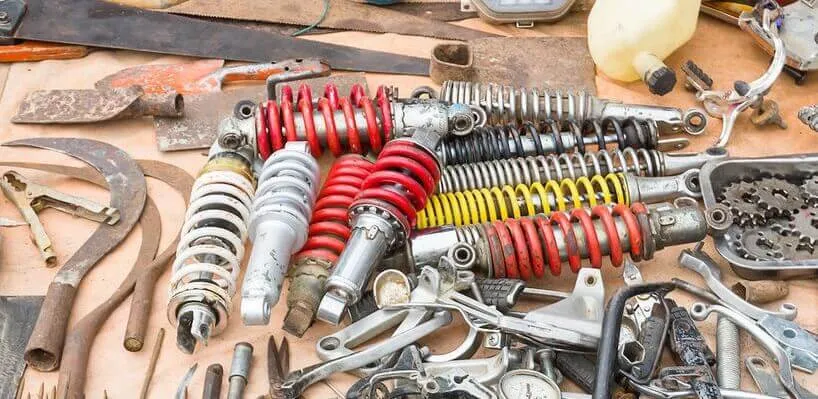Symptoms Of Bad Shock Absorbers

Shock absorbers are concentrated on maintaining control and ease the driving process. It does so by absorbing the shocks produced by the uneven road. This device sets up a link between the wheels and suspension to synchronize the force of motion.
The technology consists of two tubes and a piston. The piston does the hard part of moving up and down following the road and a tube that contains hydraulic fluid is contracted and expanded along with the cylinder.
Symptoms of Bad Shocks
Adverse shocks are harmful to a car. They can lead up to fatal injuries. So car owners opt to check the shocks once in a while and may even change them. To find out that you need a change in your suspension and the shocks have worn out, the car has some definite symptoms if the device is terrible or worsens.
- No More Smoothness: we will tend to feel vibrated more often. This technology is designed to control unwanted shivering, but the degradation of the dampers will affect the experience. While driving, the smallest of the bumps will result in a different reaction as the shocks fail to control. Even the driver will feel the wrath in the steering wheel.
- Uneven Weight Distribution: The more the dampers get worse, the more problems arise. Unequal weight distribution is one of the many issues we can observe beforehand. When the car breaks although a minimum amount, the weight will shift to the front as the suspension will not control the force. This can result in many accidents. The same scenario will repeat when taking a turn. If the car is making a left turn the weight shift to the right side making it disturbing for the driver. This effect is popularly known as nose “dive.”
- Longer Break Time: The vehicle will take more time to stop because the pistons will not work correctly as it’s supposed to and this more extended time needed to stop the car will affect the brakes as it will also count on the extra few yards to make a proper stop. In a busy road or a highway where you have to use brakes to drive carefully, it will be hard to operate as the condition will only worsen.
- Say goodbye to Symmetrical Tires: All tires should be on the same level. This is fundamental for the car. But as the shock absorbers degrade, it is not the same anymore. As it demotes, it will fail to maintain the tires on the ground with command. The aftermath of the effect is that the car will bounce on the slightest of bumps. So the tires will not exceed decade evenly all around. The part that comes into contact with the roads more will decay faster. The car will no longer have symmetrical tires.
- Fluid Leak: A tube that is filled with hydraulic fluid is the workhorse of the technology. It is sealed with a patch. The patch on the shaft will get old with time or by excess usage. Once the patch is open, fluid will run out of the tube and unable the shock to perform.
- Cracked Nuts and Bolts: shock absorber is the bridge between the wheels and the vehicle’s body. Once worn out, the device can’t absorb as it used to. The pressure that mounts on the bolts that attached to the shocks results in the crack. If broken, it will produce a constant sound while driving on a bump or uneven roads.
Bad Shock Absorber Symptoms Noise
If you have bad shock absorber symptoms noise, one of the things to do is take your car in for an inspection. A qualified mechanic will be able to determine whether or not it’s a problem with your shocks and repair any leaks that might exist. They’ll also check all parts related to these systems as well as suspension valves and other potential problems.
The most important thing to know about bad shock absorbers signs and symptoms is that they can be caused by a variety of things – such as worn-out shocks due over time or from improper maintenance; leaking bearings and seals because of poor installation or age-related deterioration; defective electrical components (like faulty wiring harnesses); broken struts, springs, bushings, ball joints, or worn out suspension parts.
Your vehicle may also exhibit other signs if something is wrong with your shocks – such as vibrations in the steering wheel when you go over bumps or strange noises coming from underneath the car (like clunking). If this happens to you and persists for a while, then your shock absorber might be bad. Please take it to an auto repair shop for diagnostics and repairs.
Frequently Asked Questions (FAQ)
Related Article
